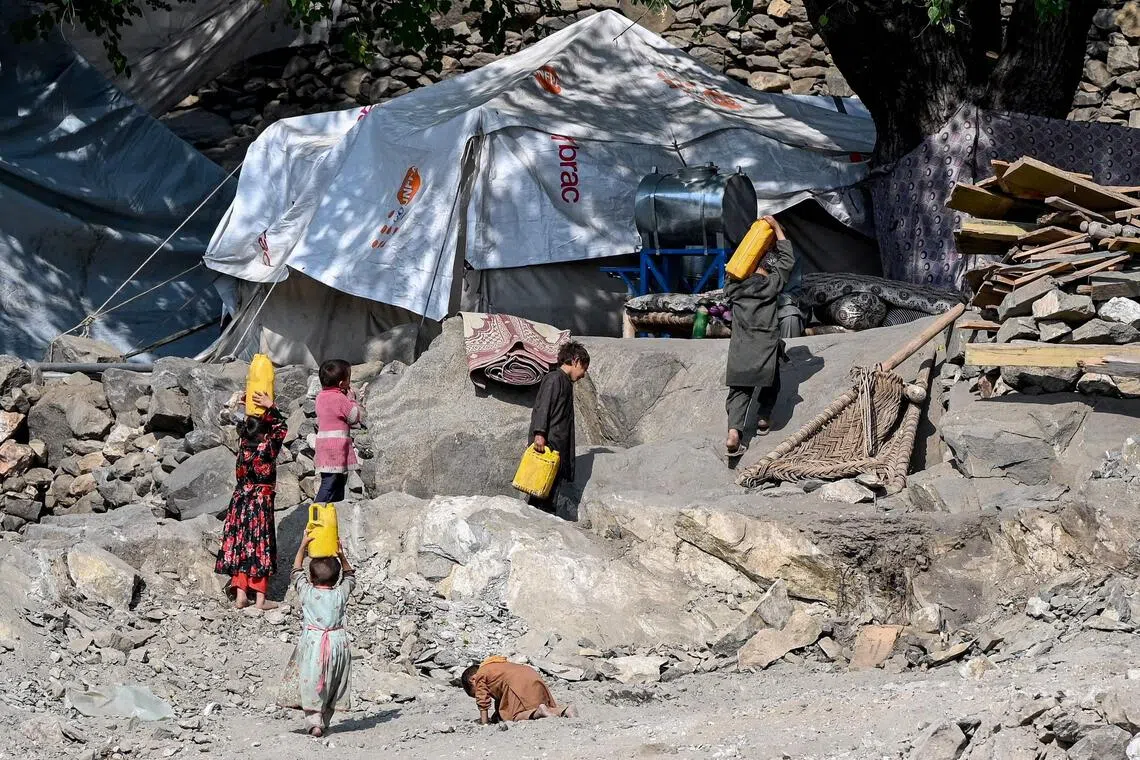Afghanistan economic recovery buckles as nine in 10 families go hungry or into debt, UNDP says
Sign up now: Get insights on Asia's fast-moving developments

In areas with high numbers of returnees, 30 per cent of children work and joblessness among returnees has reached 95 per cent.
PHOTO: AFP
Follow topic:
KARACHI - Afghanistan’s economic recovery is buckling as nine in 10 households are forced to skip meals, sell belongings or take on debt to survive, the UN said on Nov 12, warning that mass returns are exacerbating the country’s worst crisis since the Taliban returned to power.
A United Nations Development Programme (UNDP) report said nearly one in 10 overseas Afghans has been forced back home, with more than 4.5 million returnees since 2023, mainly from Iran and Pakistan, swelling the population by 10 per cent.
On top of that, earthquakes, floods and drought have destroyed 8,000 homes and strained public services “beyond their limits”.
A survey of more than 48,000 households found that more than half of Afghanistan’s returnees have skipped medical care to buy food, and 45 per cent rely on open springs or unprotected wells for water.
Nearly 90 per cent of returning Afghan families are in debt, owing US$373 (S$486) to US$900, up to five times the average monthly income of US$100 and nearly half of annual per-capita gross domestic product, the UNDP said.
In areas with high numbers of returnees, one teacher serves 70 to 100 students, 30 per cent of children work, and joblessness among returnees has reached 95 per cent.
The average monthly income is 6,623 Afghanis (S$130), while rents have tripled.
The UNDP warned that without urgent support to strengthen livelihoods and services in high-return areas, overlapping crises of poverty, exclusion and migration will deepen.
It said sustaining aid is critical as donor pledges have plunged since 2021, covering only a fraction of the US$3.1 billion that the UN sought for Afghanistan in 2025.
The Taliban government appealed for international humanitarian assistance after a deadly quake struck eastern Afghanistan
The Ministry of Refugees and Repatriation, the Ministry of Labour and Social Affairs and a government spokesperson did not immediately respond to requests for comment.
Women bear the brunt
Participation by women in Afghanistan’s labour force has fallen to 6 per cent, one of the lowest globally, and restrictions on movement have made it nearly impossible for women who head households to access jobs, education or healthcare.
Ms Kanni Wignaraja, UN assistant secretary-general and UNDP regional director for Asia and the Pacific, said: “In some provinces, one in four households depend on women as the main breadwinner, so when women are prevented from working, families, communities, the country lose out.”
Households headed by women, accounting for as many as 26 per cent of returnee families in some districts, face the highest risk of food insecurity and secondary displacement.
The UNDP urged the Taliban authorities to allocate more resources and called on donors to lift restrictions on female aid staff.
“Cutting women out of front-line aid work means cutting off vital services for those who need them most,” Ms Wignaraja said. REUTERS

